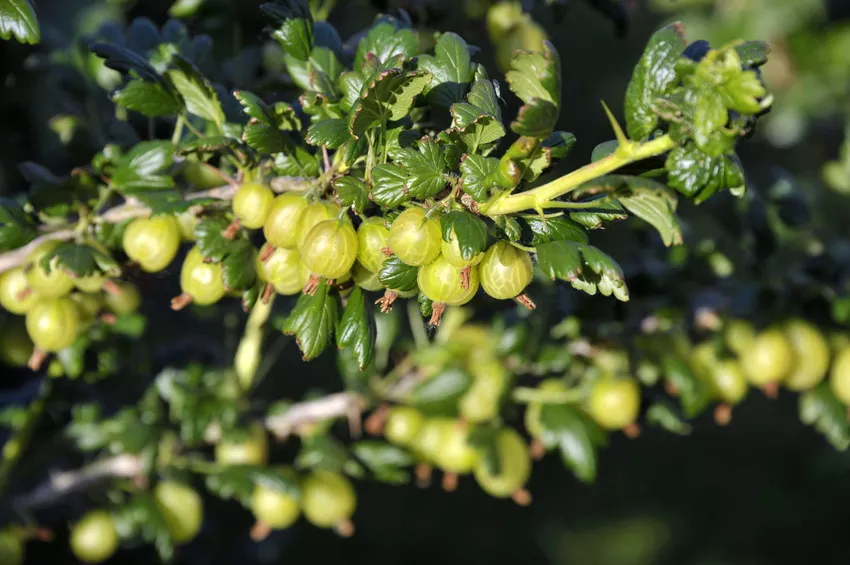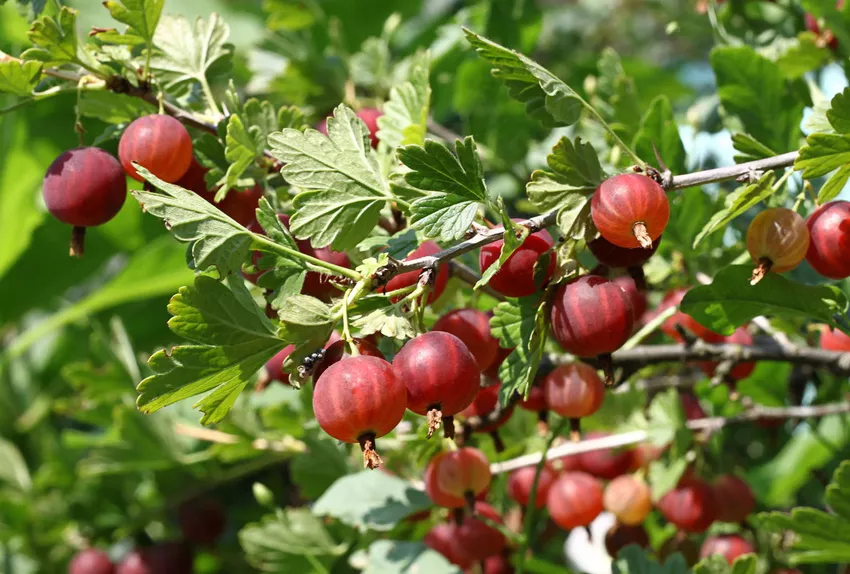We have compiled the best gooseberry varieties for you here, so that you can harvest the tastiest berries in your garden.

The gooseberry (Ribes uva-crispa) originally comes from a wild variety from Central and Eastern Europe and has been cultivated for fruit harvesting since the 15th century. However, almost all varieties are susceptible to the American gooseberry powdery mildew, which was introduced to Europe around 1900. There are now resistant gooseberry varieties on the market, but these usually only produce very small fruits. The new breeds differ not only in their fruit size. The color of the fruit, the hairiness of the fruit, the (extent of the thorns) as well as the beginning of flowering and the ripening time can also be important criteria for the choice of variety.
The trade primarily demands early-ripening shrubs with large berries that are as red as possible. That's why many old gooseberry varieties are now just a collector's item. In general, a distinction is made between varieties with green (white), red and yellow berries. Below we present a selection of the best gooseberry varieties for your home garden.
Green (white) gooseberry varieties
'Careless': Early ripening British variety; weak growth, but high yields possible; very large, hairy fruits with good taste.
'Invicta': An English hybrid of different cultivars; with strong and upright growth, therefore well suited for growing hedges; very early maturity (from mid-June); produces medium-sized, oval fruits with highly translucent veins; high and safe yields; short, soft thorns on the shoots; low susceptibility to powdery mildew.

'Green Hansa' (also 'White Triumphberry'): An 18th-century English hybrid; mid-early harvest possible from the beginning of July; frost-resistant variety with regular and high yields; medium susceptibility to powdery mildew, otherwise very robust and vigorous; strong reinforcement; large, slightly hairy fruits with a fine aroma; however, the berries will turn brown after processing.
'Reflamba': A German oneLate flowering variety; strong growth and high yields are possible; white-green, medium-sized fruits with little aroma; predominantly sour taste; Low susceptibility to powdery mildew, but difficult to harvest because of the large thorns.
'Green Ball': An old German variety from a seedling of 'Hönings Früheste'; high-yielding variety with medium ripening time; produces broad oval, large fruits with a greenish-white colour; sweet-sour aromatic taste; the fruits tend to burst, but hardly brown after processing; very susceptible to powdery mildew and cold damage.
Red gooseberry varieties
'Red Triumph' (also 'Winham's Industry'): Old variety from Great Britain (created around 1835); probably a chance seedling; medium early flowering and maturity; traditional main variety throughout Europe; regular and very high yields; several picking sessions necessary, as they ripen sequentially; very strong reinforcement; large, oval fruits with a dark red colour; densely fluffy with thick skin and very good aroma; Robust variety, but mildew possible.
'Pax': A British hybrid of different strains; early variety with strong growth; good pickability due to the few thorns on the shoots; large, medium-red fruits with few hairs; prone to sunburn; resistant to powdery mildew and leaf fall.
'Rolonda': A late variety with dark red, medium-sized fruits without hairs; pleasant, sour taste; productive; low reinforcement; bursting fruits; resistant to mildew.
'Xenia': A cultivar from Switzerland with a medium late start of flowering; can be harvested from mid-June; weakly reinforced shoots; weak growth, but good yields; brown-red, large fruits with good taste; not quite resistant to mildew; sensitive to sunburn.

'Achilles': Bred in Great Britain as early as 1800; medium early variety (ripens in early July); strong upright growth with fruit shoots that curve downwards; suitable for hedge cultivation, but needs a strong pruning; very productive; large, smooth, purple-red fruits with a sweet aroma; solid shell; easy to pick; very susceptible to powdery mildew and leaf fall disease.
'Rokula'/'Rocula': A cross with, among other things, a powdery mildew-resistant variety; medium sloping habit suitable for growing in hedges; pronounced spines; early harvest possible; consecutively ripening; round, black-red, medium-sized fruits; very sensitive to cracking due to the delicate shell;very good aroma; resistant to mildew.
'Remarka': A German variety; early harvest possible; purple, round, non-hairy fruits with a sour taste; Resistant to powdery mildew, but fruits crack easily.
'May Duke': An old British breed; early variety with strong growth; low reinforcement; high yields possible; slightly hairy fruits with a sweet and sour taste; crimson color; unfortunately a high sensitivity to sunburn, also very susceptible to powdery mildew.
Yellow Gooseberry Varieties
'Yellow Triumph Beere' (also 'Triumphant'): A medium-early ripening variety; productive; produces medium-sized, oval fruits; pale yellow color with translucent veins; sweet taste but little aromatic; strong pruning necessary, otherwise tendency to small fruits; good for processing.

'Hönings Earliest': An old variety from Germany; ripens in early July; medium yield; strong growth; medium-sized, soft, golden-yellow fruits with a very good taste; strong reinforcement available; is susceptible to leaf fall disease and requires heavy pruning; sensitive to frost.
If you are interested in the various methods of using gooseberries, we have the right article for you here with tips for freezing, preserving and more.
Tip: In addition to the variety, the nutrient supply of the gooseberries is also important. A primarily organic long-term fertilizer such as our Plantura organic universal fertilizer provides your gooseberries with all the important nutrients for three months and promotes active and he althy soil life.